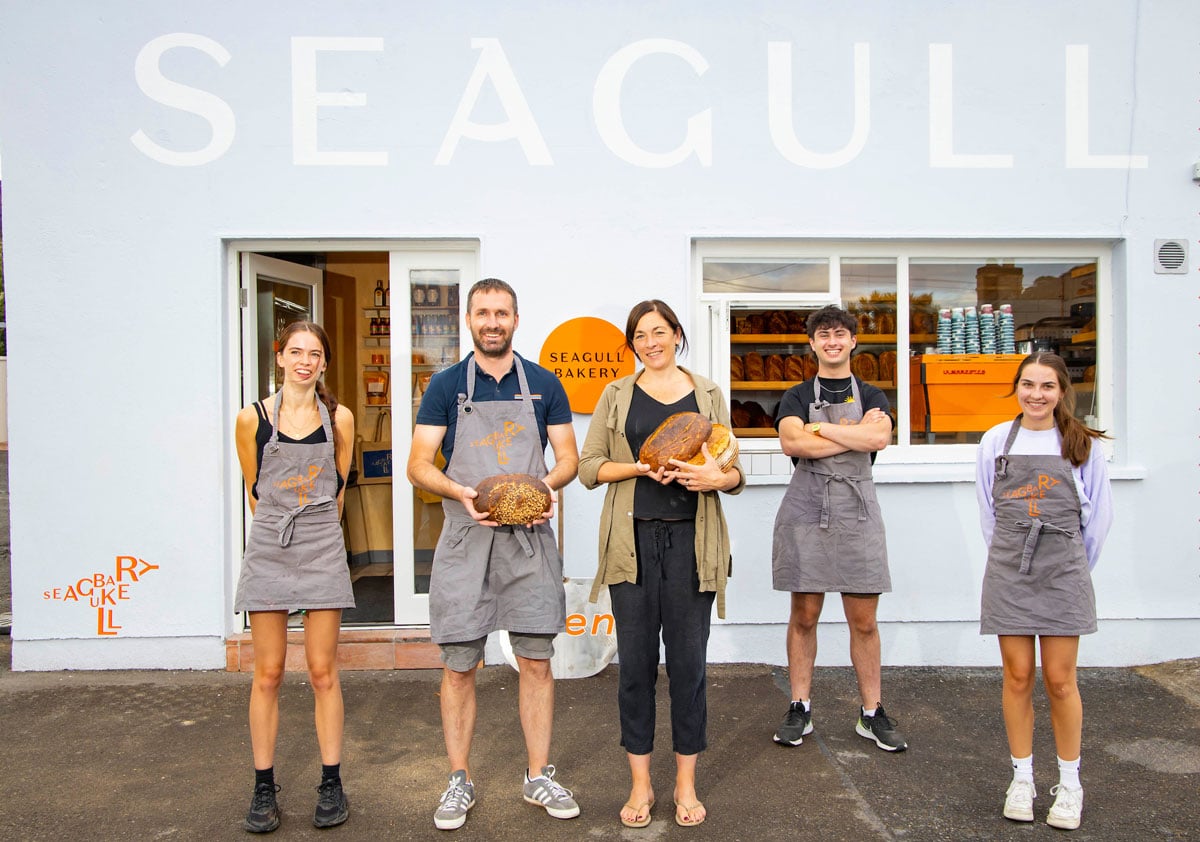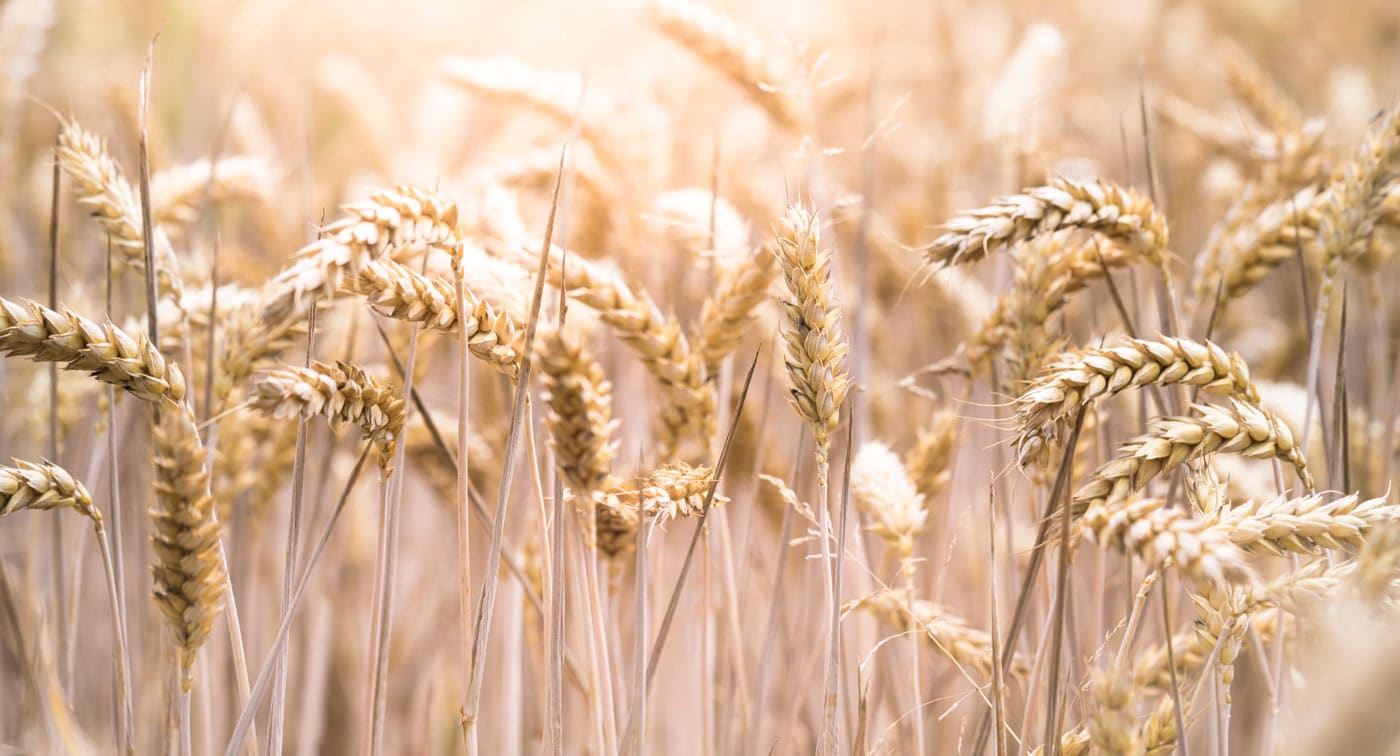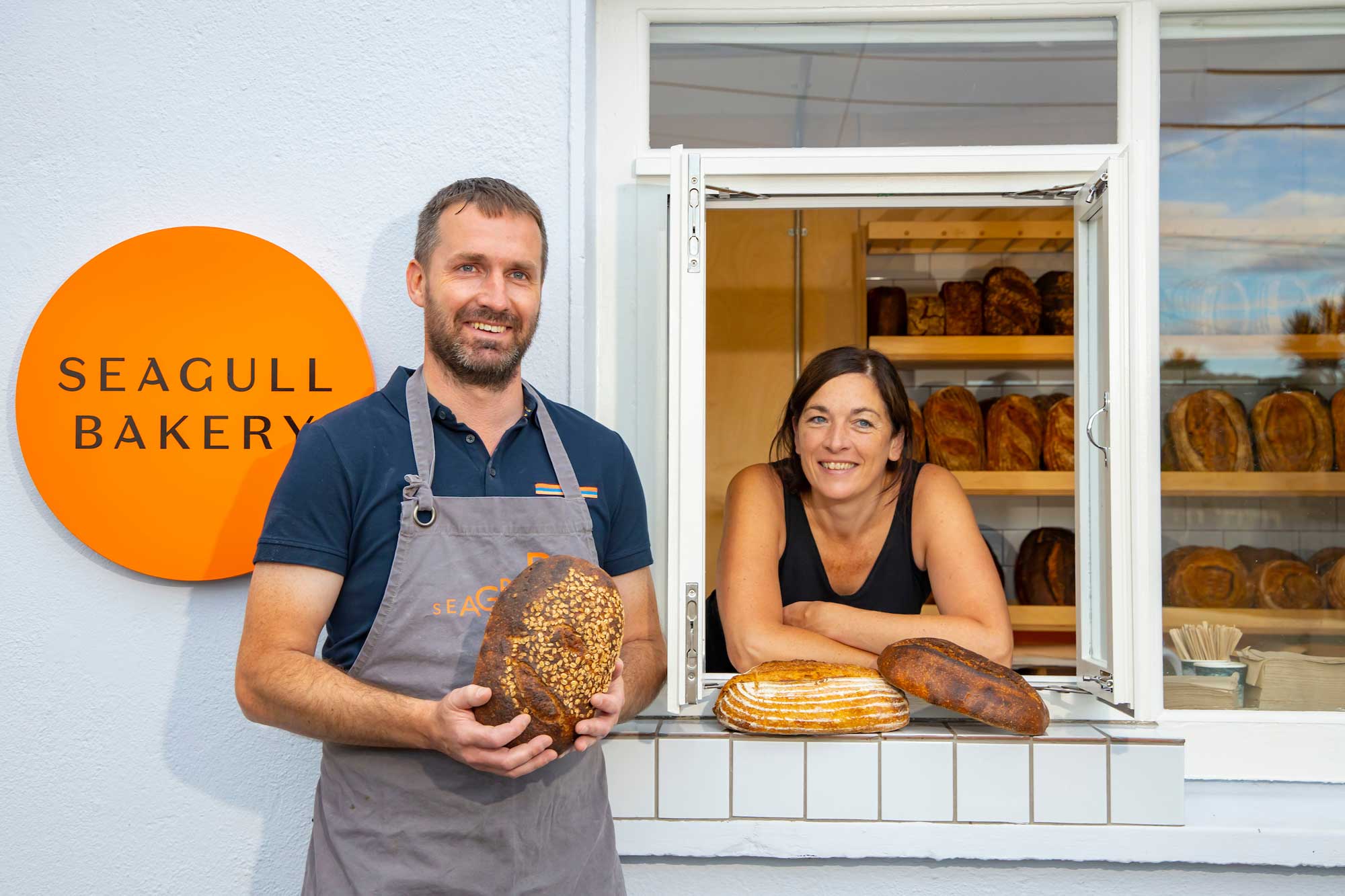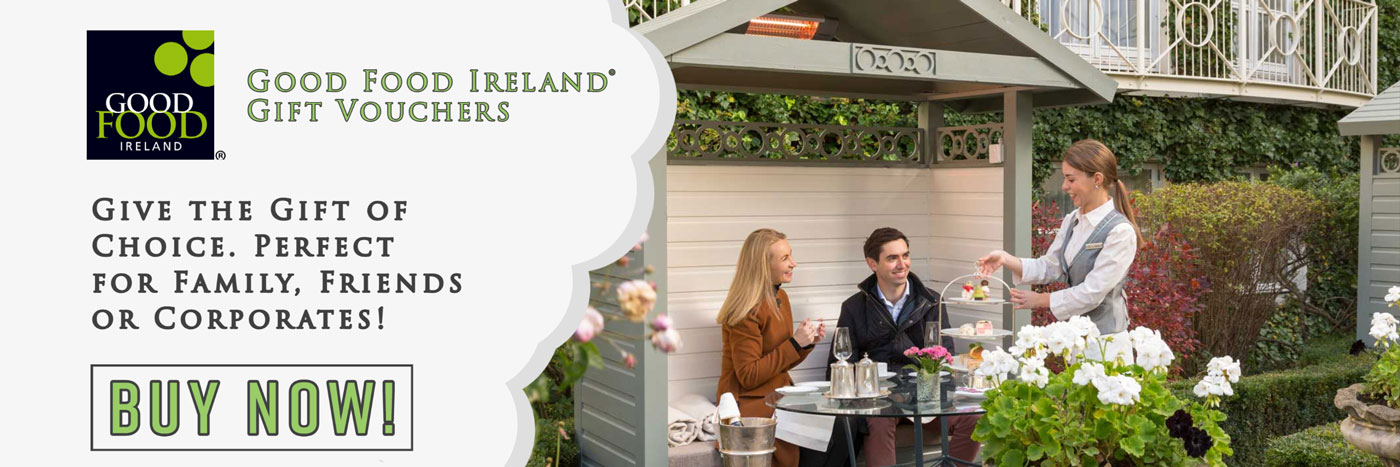
Joe McNamee visits Oak Forest Mills where the plan is to get the Grower, the Miller and the Baker all talking to each other.
The Irish Grain Industry is in desperate need of change
Oak Forest Mills
Were Emma Clutterbuck and Pat Foley of Oak Forest Mills to start making bread it would surely nail down their status as the Little Red Hens of the Irish food world, for they cover almost every other stage involved in putting a loaf on the table: from planting the seed to growing the grain, to harvesting and then milling that grain into flour for baking.
Their initial plan in 2014, to experiment with growing heritage grains, seemed relatively straightforward but the more they researched, the more they learned how unprepared the system was to cope with such a crop and just how far outside the mainstream of conventional agriculture and food systems it would take them. Mind you, it was a journey they had been on for quite some time.
First and foremost, Pat and Emma are tillage farmers, a sector that has declined significantly over the last 40 years, the amount of land under tillage falling by 15% in the last ten years and by 42% since 1980, with just 7.6% of farmland remaining under tillage.
More and more farms are moving into dairying, and almost half of the value of what is produced by those remaining comes from feed cereals for livestock. The rest is largely made up of oats (food production and fodder), rape, potatoes, malting barley and straw.
Just one per cent is milling wheat, so Pat and Emma are rather rowing against the tide by devoting the entirety of their 200 acres of farmland—the bulk, in North Co Dublin, along with 35 acres in Kildare— to growing grains for milling into flour.
This sees them in some way distanced from the accepted wisdom of conventional farming, in particular, the notion that we simply don’t have the right conditions in this country for growing milling wheat.
That they are choosing to do so organically casts them further again to the fringes in a sector that relies heavily on chemical inputs – fertilisers, herbicides, pesticides – especially when it comes to dealing with problems arising from our ‘damp’ climate. And then you look at their crop list: along with milling wheat and oats, there is naked barley (for flour, not fodder), and ‘ancient’ or ‘heritage’ grains, spelt, einkorn and emmer.
At this point, a body might attempt some clumsy pun along the lines of ‘ploughing a lonely furrow’, were it not for the fact that Pat took the ‘till’ out of ‘tillage’ over 20 years ago, ever before heading down the organic route, commencing a ‘no till’ regime in an attempt to improve soil structure.
“Pat and I wanted to try something different,” says Emma, “and had been very interested in heritage grains, particularly, spelt. We’d also been concerned by the constant refrain that it was impossible to grow milling standard wheat here which was not the case at all. Teagasc reports show it was growing good quality wheat into the mid-80s, but it became cheaper to import flour from the UK mills. They said you couldn’t grow milling wheat in Ireland and we wanted to prove them wrong – and, secondly, we needed to get away from the industrial model of farming.
“We have about two-thirds planted with ancient grains, primarily spelt but with some emmer and einkorn, approximately 30 acres of each. We also have naked barley and this is our first year doing a serious crop of milling wheat. Depending on how well that goes, we will be expanding – our own landholdings and working with other organic growers who we are talking to and who have crops growing. But we want to make sure the quality is there, we wanted to show you can grow top quality milling grain in this country so we are not going to compromise on quality.”
But, as the country left milling wheat behind in the 80s, the infrastructure no longer existed to process their grains.
“We needed to set up the mill,” says Emma, “because there was no outlet to market, there wasn’t a readymade place to sell our product and also we couldn’t find anyone who could de-hull and use our ancient grains or anyone we could rely on to mill it to the quality we wanted.
“There are small mills but they’re all taken up with their own work. We knew we needed to be flexible. We had to respond very quickly. We knew the grain was good but you can’t produce a huge quality of stoneground flour over a short period of time because it will go off.
So, they opened their own mill, in Piltown, in Co Kilkenny, importing two – it has to be said – quite gorgeous stone mills, from Austria, the smaller of the two capable of milling 100kg of grain per hour while the larger can manage up to 450kg per hour.
The next step was finding a market and the Real Bread Ireland network, a collective of artisan bakers baking daily by hand, provided a willing outlet.
The Seagull Bakery
“We found the bakers were delighted to get Irish flour,” says Emma. Chief among them was Sarah Richards of the highly progressive Seagull Bakery, in Waterford.
“I had a beef with spelt flour,” admits Sarah, “but that’s more about the story that has built up around it, that it is an easier grain to digest if you’re gluten intolerant but that is because of the process [of long, slow fermentation breaking down the gluten] rather than the grain itself and I love working with it now. When I get flour from Emma, she can tell you about a particular flour and what to expect from it. Sure, you can get flours, even organic flours, that are standardised to achieve consistency but I find they are lacking in flavour, they are more like industrial bread, fluffy and pappy.
“I had a bit of playing around with it at the beginning,” says Sarah, “but once I figured it out, that it required minimal handling and endless water, it’s been amazing and the spelt loaves are very popular in our shops.”
When Pat was a boy, his father, who had a transport business, bought a farm.
“It was conventional farming,” says Pat, “started off with 40 or 50 acres and ended up farming 3,500 acres. The original contract was supplying about 1400 acres of barley to Guinness, We grew milling wheat for Odlum’s and Boland’s back in the day, in the 70s. I remember delivering there until they phased out milling wheat in the early to middle 80s. We used to grow a little bit for Farrington’s, we always grew about 300-400 acres of milling wheat until it became unsustainable to continue. The likes of Odlum’s were doing massive contracts with the UK and Canada and blending hard and soft wheat to get a higher protein. it was making it unsustainable to keep earning a living from growing Irish wheat.”
Pat, too, went into the transport business but the grá for farming remained and he returned to it in 2000, setting up the current operation in 2010, and he and Emma are now awaiting final certification of their organic status.
“I reckon organic is going to get very strong in the next five to ten years,” says Pat, “because people are becoming concerned at what they are putting into their bodies. There are still farmers going out and desiccating [accelerating the drying process by removing moisture] with glyphosate on oilseed rape, spring and winter barley, spring and winter wheat, to bring the straw in quicker.
“I’ve been anti-that for about 20 years. I believe in ripening naturally. I was in between organic and really strong conventional farming, for the last ten, 15 years. We haven’t been using insecticides, a little bit of fungicide and only if it was needed, no prophylactic spraying, I was more into feeding the crop.
“I’m into ‘no till’ [zero tillage of the soil, sowing on top of the soil or by direct drilling]. I believe in keeping the carbon in the soil, keeping the soil structure. Over 20 years ago, we went away from power-driven cultivators, power harrows, they were actually destroying the structure of the ground. Take the modern potato farmer using bed drillers, they go down 14 or 15 inches, mixing subsoil with topsoil, so you are actually destroying the soil structure, leaving no option but to put your N, P and Ks [nitrogen, phosphorous, potassium] in, you have to rely on them. There are some guys who were very good potato farmers, conventional farmers but they would use an awful lot of organic inputs.”
Caught between a rock and a hard place, the huge costs of conventional inputs (chemicals, seeds and feed) on one hand and the low prices for output (livestock, dairy or crops) means margins are increasingly squeezed and 64% of Irish farms carry debt, so it is no surprise more and more of them are keen to learn more about switching to organic.
Though many Irish farmers will recall from childhood that ALL Irish farms were pretty much ‘organic’ before the introduction of serious chemical inputs, making the leap from conventional to organic is still a pretty daunting prospect. “The Irish farmer is slow to change,” admits Pat.
Pat and Emma’s most important crop may well be ‘knowledge’, their farm serving as a ‘laboratory’, organic farming on a scale comparable to conventional, demonstrating how the technological advances of conventional farming can be combined with organic principles to produce truly regenerative and progressive agriculture for the 21st century.
“We went down the road of precision farming,” says Pat, “There are a lot of organic guys out there are planting and ‘closing the gate’, they reckon they have enough nutrients in the ground for their plant to survive but with the very wet winters a lot of the nutrients are being washed out of the ground and you really don’t have any option but to start testing your crop and foliar feeding.
“I work with several organic suppliers of feed and inputs,” says Pat, “and we’re still learning. We are still very young in terms of organic feeds, knowing what’s available, what it does and when to put it on.”
Pat also began using specialist machinery, including tractors geared with RTK (Real Time Kinematic) systems, accurate to within two centimetres for planting, planting colters or rows further apart without losing yield, to allow air to circulate more freely to keep down mildew and other diseases. With such a tractor coming in at €350,000, it is not cheap.
“This is how you would be doing organic tillage farming at scale,” says Pat. “Our plan is to bring smaller operators along and help them.”
There are many challenges in farming, many more when you go down the organic route in the face of a system almost entirely geared to supporting conventional farming. The biggest problem of all, however, doesn’t differentiate between either method; a violent summer storm will equally destroy a field of organic wheat as it will a field of conventionally farmed wheat and with climate change as the great existential crisis of our time, we can only expect more of the extreme weather that is making all sorts of farming increasingly difficult. It is not just harvesting that is impacted. Wetter winters mean that it is increasingly harder to find time to plant winter and spring crops.
“We are having those wetter winters that the climate scientists warned about,” says Emma. “We are seeing evidence of the hotter summers. We had a long cold spring and we are seeing definite changes again this year. We were fearful of having an extended drought but that didn’t happen. Now we’re into a period of extended wet weather just as we are about to start our harvest, and we’re keeping our fingers crossed that the weather will pick up again in time when we need to harvest the crops. It’s the same for all tillage farmers; some of it is ready to go but we can’t go in until the weather. It’s hard to rely on the weather patterns: If we can get the weather, it’s brilliant but there’s always a risk of losing crops.”
“Our ultimate goal,” says Pat, “is to get the grower, the miller and the baker all talking to each other. It’s not that we want to take over the whole process, we think there is room in this market for a lot more people to become involved, to ensure that no one is going to go out and saturate a market by charging extraordinary prices, a baker can only pay a certain price to survive.
“The future model for Oak Forest Mills is if other growers meet a standard for quality and protein yield, we give a bonus but if it doesn’t it goes to animal feed so a grower knows at the beginning of the season, they are guaranteed a certain price to cover costs at least.
“Bringing them all together, the grower, the miller, the baker,’ says Emma, ‘means everyone can talk up and down the line, so it is not one sector taking advantage of another, it is about everyone feeling they are getting a reasonable return for their efforts. That’s what the market is supposed to do but when you have a market failure, which you do right now when one sector is taking all of the costs and risks and the other sector has a guaranteed income, that one sector has more power.
“It is too early to say yet, but we are not prepared to give up on it, we think it is possible, we just have to have a lot of flexibility. There needs to be a readiness to adjust the approach to accept variations in yield and margin to enable farmers to go from year to year. In five years, you’d need three good years to allow for two failed crops.”
“Every year is a challenge,” says Pat, “and every year you don’t know what that challenge is going to be but we’ll keep on going.”
This is part two in a series of articles, read part one of The Road Less Travelled.
Explore & Book
Food & Drink Experiences
Vintage Afternoon Tea At Newbridge Silverware
What You’ll Get The Exclusive Good Food Ireland® Vintage Afternoon Tea Experience at Newbridge Silverware with a Museum of Style Icons visit & a 20% Discount Voucher for Newbridge Silverware Shopping Included, and free car parking. Domo’s...Craft Beer & Seafood Trail of Howth, Dublin
Craft Beer & Seafood Trail of Howth Perfect for the man in your life for Valentine’s Day. What better way to spend an afternoon, than eating the best locally caught Seafood in Ireland, washed down with an ample amount of local Craft Beer. Add...Majestic Afternoon Tea at the Maryborough Hotel – Cork
Perfect for Valentine’s Day. Upon arrival, be welcomed by the warm and attentive team at the stunning Maryborough Hotel and Spa in Maryborough, Cork. When making your reservation you have the wonderful option to take Afternoon Tea in the beautiful...




